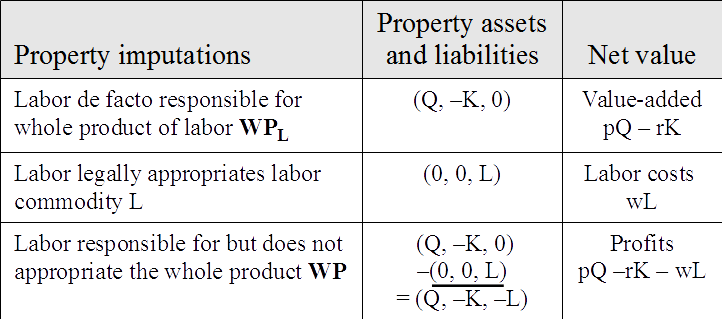Neoclassical economic theory presents marginal productivity (MP) theory using the scalar notion of marginal products, and takes pains, in one way or another, to argue that competitive equilibrium satisfies the supposedly ethical principle: “To each what he and the instruments he owns produces.” This paper shows that MP theory can also be formulated in a mathematically equivalent way using vectorial marginal products–which however conflicts with the above-mentioned “distributive shares” picture. Vectorial MP theory also facilitates the presentation of modern property theory which on the descriptive side is based on the fact that, contrary to the distributive shares picture, one legal party owes 100 percent of the liabilities for the used-up inputs and owns 100 percent of the produced outputs in a productive opportunity. On the normative side, modern property theory is the old “labor theory of property” presented in the modern form as the juridical-ethical principle of imputing legal responsibility in accordance with de facto responsibility for the liabilities and assets created in production–where, of course, only persons and not things (“the instruments he owns”) have responsible agency. Vectorial marginal products (with positive and negative components) thus facilitates presenting the actual ethical principle: “To each person the assets and liabilities he or she produces (usually jointly with other persons).”
On Vectorial Marginal Products and Modern Property Theory
December 20, 2015 by
